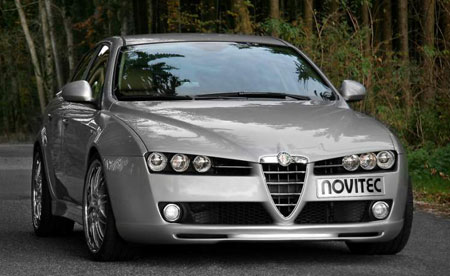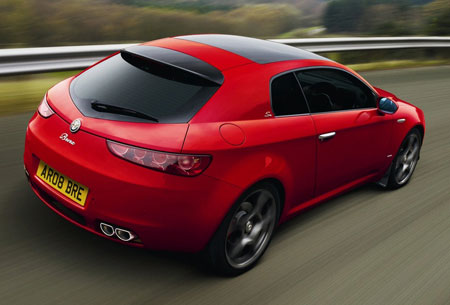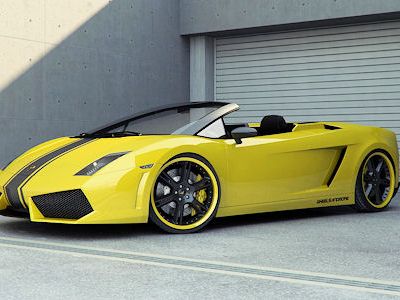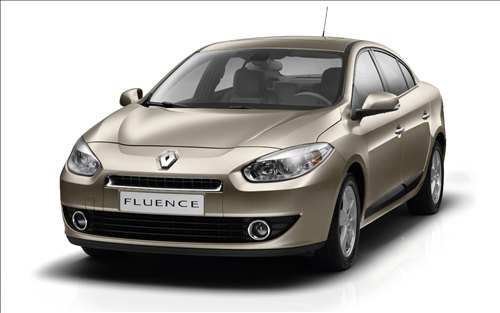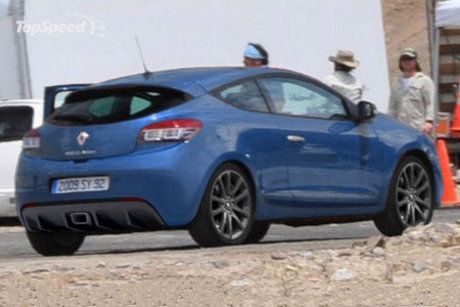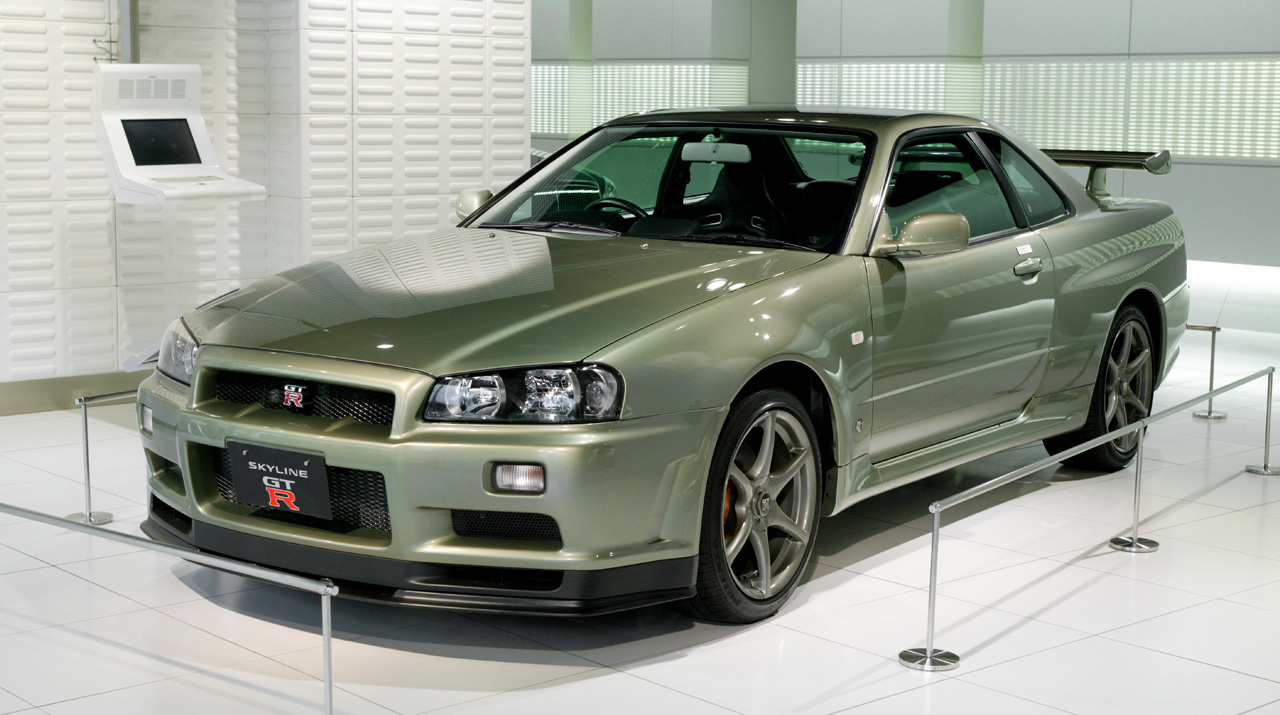The world debut of the new BMW 5-Series Sedan marks the epitome of modern design and driving pleasure in the world of premium midsize sedans. Through its athletic and executive looks, driving dynamics typical of BMW, and innovative comfort and safety features, the sixth generation of BMW's executive express accurately reflects the standards upheld by the world's most successful manufacturer of premium cars.
Design: charismatic and athletic.
With the longest wheelbase in the segment, a long and sleek hood, short overhangs, and a coupe-like roofline, the new BMW 5-Series Sedan stands out clearly from the competition. Overall, the aesthetic looks of the car are achieved through balanced proportions. Design features emblematic of BMW are to be found at the front with its kidney grille inclined slightly forward, in the stylish and elegant side view of the car, and at the muscular rear end.
Within the interior, precise functionality and a fresh ambience come together in perfect harmony, unmistakable style, and clear orientation to the driver.
Driving experience: benchmark dynamics and exceptional comfort.
Highly advanced drivetrain and suspension technologies combine agile handling for the driver and a high standard of riding comfort for passengers. When equipped with the Sport Package, the new BMW 5-Series Sedan includes Adaptive Drive, which encompasses Driving Dynamics Control, Electronic Damper Control, and Active Roll Stabilization. Optional Integral Active Steering will virtually extend or shorten the vehicle's wheelbase for improved stability at high speeds and enhanced agility at lower speeds.
At launch, the new BMW 5-Series Sedan will be available with one V-8 and one inline-6 gasoline engine. The top-of-the-range BMW 550i arrives with BMW's "reverse-flow" V-8 engine featuring twin turbochargers and High Precision direct injection for maximum output of 400 hp. The new inline-6 of the BMW 535i features a single twin-scroll turbocharger, High Precision direct injection, and, for the first time, VALVETRONIC throttle-less intake technology. It delivers a maximum output of 300 hp and 300 lb-ft. The 535i and 550i will be available with a choice of 6-speed manual transmission, BMW's new 8-speed automatic transmission, or new "Sport Automatic" 8-speed.
Later, the BMW 528i will debut with a 240 hp inline-6 featuring lightweight magnesium-aluminum construction and VALVETRONIC throttle-less intake technology for efficiency and unparalleled responsiveness.
BMW EfficientDynamics: BMW 5-Series increasing the lead.
BMW EfficientDynamics technologies are featured in appropriate combinations on each model, including features such as Brake Energy Regeneration, Electric Power Steering, a gearshift point indicator, active cooling air flaps, and on-demand operation of engine accessory drives. Lightweight materials are used intelligently to balance the vehicle and lower its overall weight. For example, components such as doors, hood, front fenders, and suspension assemblies are made of aluminum.
Innovative driver assistance systems.
The driver assistance systems offered with the new BMW 5-Series include an all-new Parking Assistant, Top View cameras, and Frontal Collision Warning with application of the brakes when ordered with Active Cruise Control plus Stop & Go. Other driver assistance features available include Blind Spot Warning, Lane Departure Warning, a Head-Up Display, BMW Night Vision with Pedestrian Detection.
Joint development and production together with the BMW-7-Series.
The world debut of the new BMW 5-Series Sedan opens up the latest chapter in a truly impressive story of success. In the course of five model generations, overall sales of the BMW 5-Series already amount to more than 5.5 million units. Now the new model is based on a newly developed vehicle architecture also featured in the BMW 7-Series luxury sedans.
Joint production of the BMW 5-Series Sedan and the BMW 7-Series at BMW Plant Dingolfing, together with the extensive use of shared components, ensures highly efficient production with the highest standards of quality.
Exterior: Dynamic proportions in perfect balance.
The proportions of the new BMW 5-Series Sedan are defined in archetypal BMW style by the long wheelbase and hood, short overhangs, aft-set greenhouse, and the coupe-like flowing roofline. The slightly wedge-like shape of the body creates a sporty, forward-moving character. The fresh interpretation of BMW's signature Hofmeister kink at the bottom of the C-pillar further emphasizes the dynamic looks of the car in profile.
The entire silhouette is superbly balanced, providing a clear indication of the near-perfect front-to-rear weight distribution for all engine variants. Measuring 2.97 meters or 116.9", the wheelbase of the new BMW 5-Series is the longest in the car's segment, while the sculptural design again distinctive of BMW provides a smooth flow of lines from the front along the side to the rear, creating a body where everything fits together as if out of one mould.
Charismatic front, elegant side, muscular rear.
The expressive front end of the new BMW 5-Series Sedan presents the sporting character of the car. The upright BMW kidney grille - even appearing from some angles to lean forward - symbolizes the forward-pushing motion of the sedan and, together with the powerfully flared wheel arches, gives the front end of the car strong charismatic presence.
In conjunction with the BMW Adaptive Xenon headlights (optional on 528i), the daytime running lights incorporate quite unmistakable LED corona rings, while the direction indicators moved far to the outside are made up of ten LED units each. As a final highlight, an LED focus light marks the upper edge of each headlight unit.
Above the striking contour line running along the car at the height of the door openers, a slightly flared shoulder surface, together with the coupe-like roofline and the stretched window surface, gives the glazed section of the passenger cell a light and stretched look despite its size. Further down the body, concave modeled surfaces create lively light and shade effects emphasizing the sporting character of the sedan. Greater curvature around the rear wheel arches, finally, bears clear testimony to rear-wheel drive typical of a BMW of this kind.
The dynamic lines of the car are further enhanced by the strikingly compact counter-swing at the bottom of the C-pillar. Featuring the smallest radius at this point ever to be seen on a BMW sedan, this re-interpretation of the typical Hofmeister kick underlines the stretched silhouette of the car and gives the passenger cell a light and low appearance.
Running parallel to one another, the contour and sill lines rise up dynamically, the former stretching out from the front wheel arch all the way to the rear lights to create the elegant and dynamic look of the car from the side. The sculptural shape typical of a BMW established in this way makes the side sections and the rear end literally flow into one another.
The contour lines continue into the contours of the rear light clusters and finally come together above the license plate. Seen from the rear, the new BMW 5-Series Sedan also stands out through the concave surface between the contour line and the wheel arches giving the body a distinctly recognizable waist. The flared wheel arches and the horizontal breakdown of the rear end, in turn, strongly emphasize the powerful stature of the sedan, the wide track and the wheels ending flush with the wheel arches further enhancing this impression.
The L-shaped rear light clusters again reflect the typical look of a BMW and provide that unmistakable night design. Three rows of LED lights form the look of homogeneously glowing bodies again quite characteristic of BMW. And last but not least, the direction indicators and brake lights also come in LED technology.
Modern cockpit with clear orientation to the driver
The cockpit is inclined towards the driver at an angle of approximately 7° and the asymmetrically designed center console likewise emphasizes this clear orientation to the driver. The horizontal lines of the instrument panel accentuate the feeling of space.
As in all BMWs, well-researched ergonomics allow for optimum operation of driving controls and other functions. All displays, knobs and buttons serving comfort functions are situated centrally for use by the driver and front passengers; controls for the driver's use only are to the left of the steering wheel, on or near the steering wheel, or on the front center console. The steering wheel has power tilt and telescopic adjustment and tilt-away for exit and entry; and of course both front seats come standard with 10-way power adjustment including head-restraint height.
The seating position has been improved over the former model both front and rear, with knee-room on the rear seats of the new BMW 5-Series Sedan up by 13 millimeters or 0.5". Luggage compartment capacity is 520 litres or 18.2 cubic feet, and the folding rear-seat backrest available as an option provides greater flexibility in enlarging the car's transport capacities. In addition to its 40:60 split, the rear-seat backrest also comes with through-loading and, as yet a further option, a ski-bag for additional convenience.
Instrument panel in Black Panel technology.
Like so many aspects of the new BMW 5-Series sedan, its instrument cluster combines BMW tradition with advanced, beautiful new executions. Here the entire cluster is in a high-resolution Black Panel display, in which four classic circular instruments are most prominent; other driving-relevant displays and readouts - including Navigation if present, vehicle-monitoring functions, upcoming service requirements and other information - also appear here in their various (and function-related) graphic forms. Climate-control settings and controls are located in a second Black Panel display in the center console stack.
4th-generation iDrive: Intuitive, powerful and fast.
With the new BMW 5-Series sedan, BMW's 4th generation iDrive control screen appears in two versions: with 7.0-in. dimensions and 800 x 480-pixel resolution in standard form, or with the optional Navigation system, in a dazzling 10.2-in., 1280 x 480-pixel version with a wider range of features and functions as in the new BMW 7-Series. Displays are transreflective so that light from the sun actually enhances the images on the screen.
The instrument cluster interacts in new ways with the iDrive control display and the available Head-up Display. According to selected function, users can call up phone numbers or radio stations via the steering-wheel controls. The cluster display also augments iDrive's optional Navigation display with road-realistic directional instructions, helping the driver to change lanes or negotiate a complicated intersection. If the optional Head-up Display is activated, the relevant directions appear there.
Materials and colors: enhancing the elegance.
The choices of colors and materials further enhance the impression of personal luxury and the interior's interplay of lines and surfaces. For the dash's finely grained upper section, there are two colors depending upon the chosen interior color. Dakota leather is standard on the 550i, and available in six color schemes of which three are new; BMW's luxurious Nappa leather is optional, and available in three color schemes.
Dark Burl Ash wood trim interior trim is standard, appearing in sweeping expanses on the dash, doors and front center console; Ash Anthracite (gray tone) and another distinctive wood called Fineline Matte are optional.
The center console comes in two variants: On cars with a manual gearbox the console is split into two sections, the black surface surrounding the gearshift lever and the buttons on the optional Driving Dynamics Control oriented towards the driver. A key holder has been placed between the gearshift lever and the climate controls.
On models with automatic transmission, the space between the electronic gear selector lever and the climate control unit offers enough room for two cupholders and a key holder. A further storage compartment is located behind the iDrive Controller (where there is another cupholder on models with a manual gearbox).
Powertrain: The essence of BMW EfficientDynamics.
The new BMW 5-Series will be offered in the United States with a choice of three gasoline engines. At its introduction, the new 5-Series will be available as a 535i and 550i. The 528i and xDrive all-wheel drive variants of all three models will arrive later in the year.
The 550i is powered by BMW's stunning 4.4-liter, 400-hp twin turbocharged V-8 engine. Compared to BMW's earlier, normally aspirated V-8, displacement is reduced from 4.8 to 4.4 liters, and incorporates twin turbochargers with High Precision direct injection. In quantitative terms, the new engine delivers its 400 hp over a range from 5500 to 6400 rpm. Maximum torque is 450 lb-ft, available over the extremely broad range of 1800 to 4500 rpm. Aside from the dramatic thrust that drivers will notice subjectively, the objective data are dramatic too: 0-60 mph is estimated to be in just 5.0 seconds (preliminary) and a top speed when equipped with the Sport Package of 150 mph. For models without Sport Package the maximum speed is limited to 130 mph.
Through its unique reverse-flow layout, the 550i's V-8 engine is able to achieve higher output without correspondingly higher fuel consumption. In technical terms, the approach involves some very new design details. For the first time, twin turbochargers and the exhaust-cleansing catalytic converters are placed between the V-8's two cylinder banks. In turn, this required the exhaust camshafts and valves to be inboard so that the path from cylinders to turbochargers (which are driven by exhaust gas) would be kept short. A key benefit of this layout becomes a more compact engine package. This is the reverse of a traditional V-8 layout, and opens a new era of V-8 engine development potential.
BMW's newest gasoline inline-6 engine will be the powerplant for the new 535i Sedan. It features a single, twin-scroll turbocharger and 3.0 liters of displacement. In addition to High Precision direct injection, the new engine is the first BMW inline-6 to be equipped with both turbocharging and BMW's VALVETRONIC throttle-less intake technology. The combination of these BMW EfficientDynamics technologies delivers improved throttle response from idle to redline, reduced fuel consumption, and substantially reduced emissions. The new engine is rated at 300 hp at 5800 rpm and 300 lb-ft of torque. The torque peak is notable for its incredible accessibility: the full 300 lb-ft is available from 1200 rpm - 5000 rpm.
Playing a supporting role: innovative new 8-speed automatic transmission.
All new BMW 5-Series models will feature an 8-speed automatic transmission, which brings smooth shifting, sportiness and efficiency to new levels of perfection. Compared to the exemplary 6-speed automatic offered in past BMW models, the 8-speed's "taller" cruising gears make a significant contribution to reduced fuel consumption and emissions, as well as quietness. And its wider spread of ratios from lowest to highest gear enhances acceleration and response across the range of driving speeds.
Technically speaking, this new automatic's attributes have been achieved via an innovative concept that provides the two additional ratios (7 and 8) with no increase in bulk or weight. In an arrangement not heretofore employed in an 8-speed automatic, four planetary gearsets and five clutch packs are controlled in a way that no more than two of the five clutch packs are freewheeling at any given time. The modest increase in the number of mechanical elements allows the new transmission to achieve unusually high efficiency: the so-called "gearing efficiency" is higher than 98% in all eight gears. In 6th gear, it's highest of all because that is direct drive, with no gearing reduction at all. Combine this with reduced friction and the ability to keep the torque converter "locked up" more of the total driving time, and the transmission becomes very much a part of the new BMW 5-Series' overall efficiency concept.
Two additional gears mean threefold progress: quicker shifts, greater smoothness, enhanced efficiency.
The wider spread of ratios allows the engine to run at lower speeds, mainly in the "tallest" gear, 8th. Yet even with this wider spread, the steps between adjacent gears are reduced; in turn this means a stronger, smoother flow of power during acceleration.
And for the same reason, faster shifts are a further benefit because only one clutch pack is disengaged to shift up or down by one or two gears. On the other hand, downshifting more than two gears is accomplished as a direct shift. For example, a downshift from 8th to 2nd gear is made with only one clutch pack disengagement, and thus occurs without stepping down through the intermediate gears. Thus at one instant the driver can be enjoying the quiet, fuel-efficient low rpm of 8th gear, and in the next instant getting maximum acceleration.
Manual Transmissions: Continuing a BMW tradition
BMW continues as the only manufacturer to offer manual transmissions in the BMW 5-Series' competitive set, underlining the sporty nature of the car, as well as BMW's commitment to driving enthusiasts.
The 535i and 550i Sedans will be offered with a 6-speed manual transmission in the United States, providing a level of driver involvement unique in the segment.
Brake Energy Regeneration: an energy-saving innovation.
The new BMW 5-Series sedan continues the roll-out of BMW's Brake Energy Regeneration system on US models. To save energy and reduce the vehicle's fuel consumption over time, this system manages the times at which the alternator charges the battery.
Conventionally, a car's alternator runs continuously and thus is always charging the vehicle's battery. In the new BMW 5-Series, it charges only when the vehicle is decelerating or braking; otherwise, it freewheels and draws virtually no power from the engine. An electronically controlled clutch, similar to that used with the air-conditioning compressor, is used to engage and disengage the alternator.
Accommodating the less-frequent charging is a special, more powerful vehicle battery that can satisfy the vehicle's high electrical demands without access to continuous charging. The battery uses a technology called "glass mat," in which its internal plates are separated with saturated absorbent glass-boron silicate rather than the usual liquid electrolyte. This construction sharply reduces the battery's conversion of charging energy to heat, and can provide the necessary electrical power for longer periods between charges.
source : BMW Press











